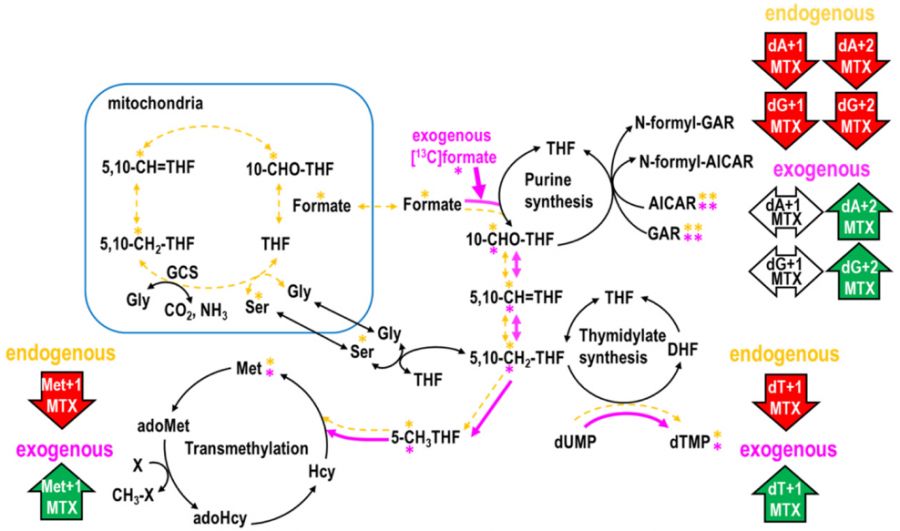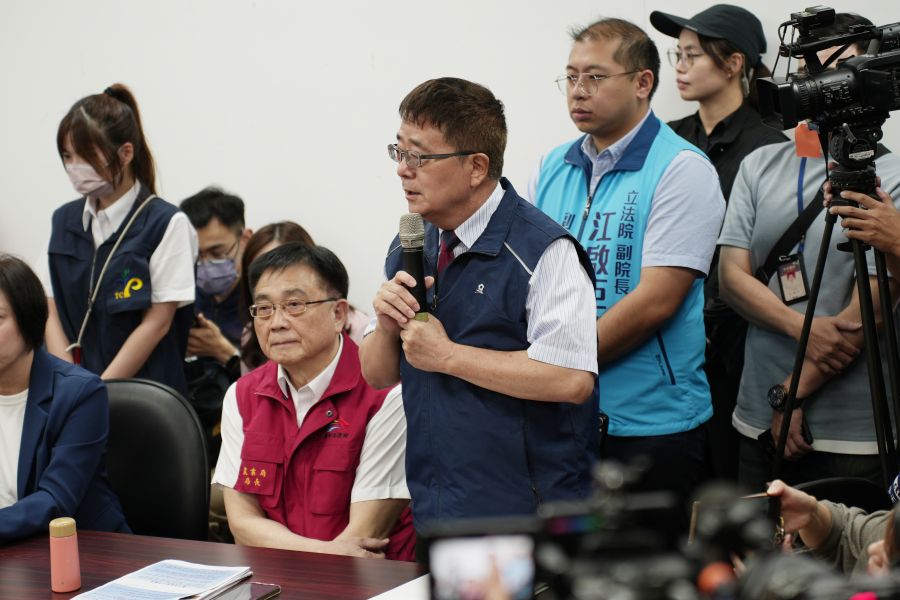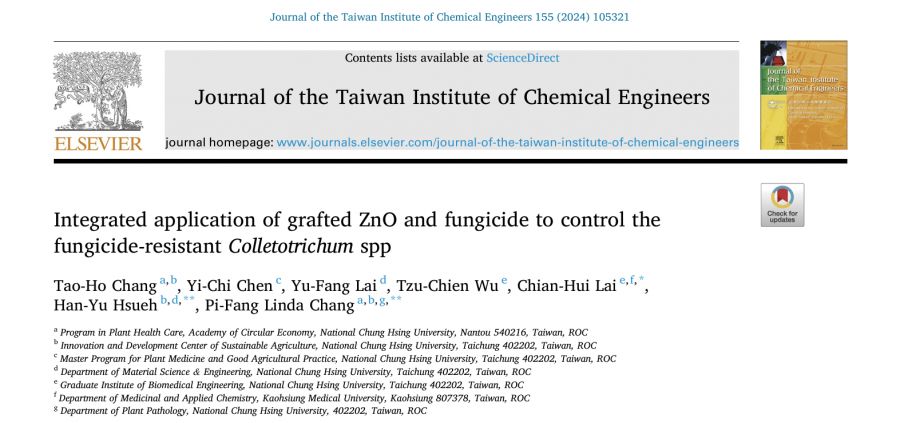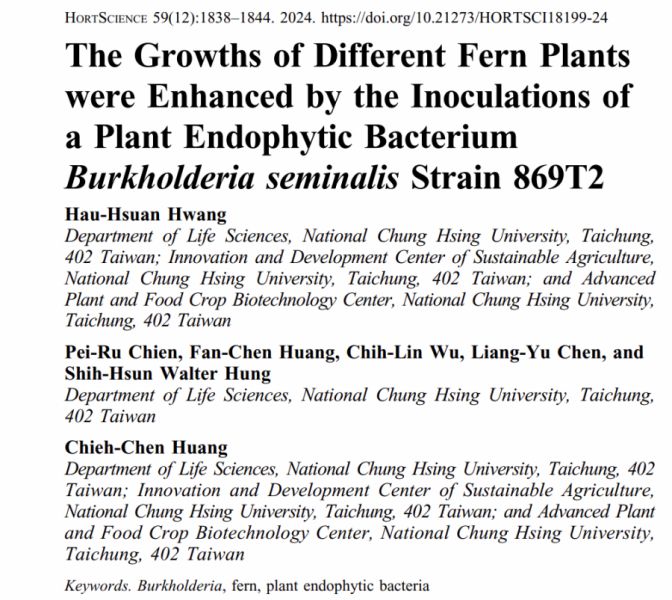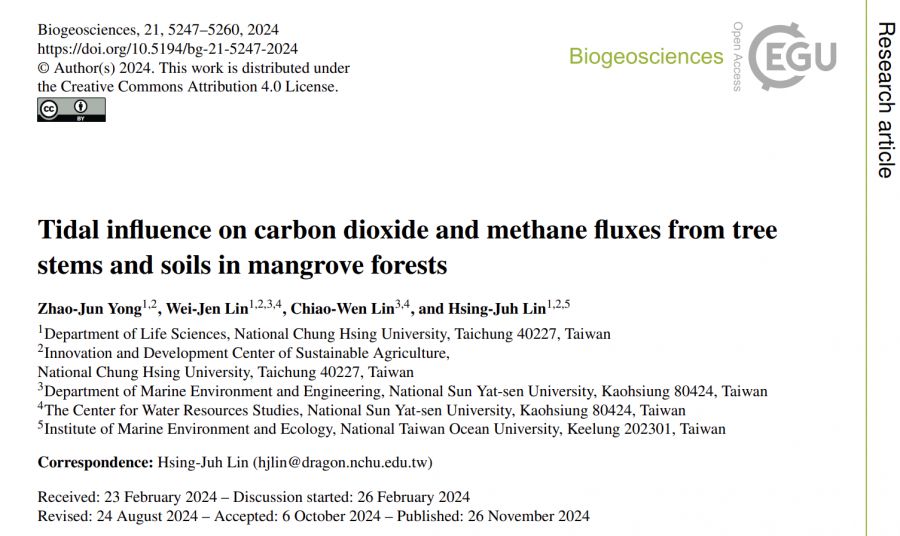循環農業:農業廢棄物再資源化【食品暨應用生物科技學系/蔣恩沛特聘教授】
| 論文篇名 | 英文:Folinate Supplementation Ameliorates Methotrexate Induced Mitochondrial Formate Depletion In Vitro and In Vivo 中文:亞葉酸補充劑在體外和體內改善甲氨蝶呤誘導的線粒體甲酸消耗 |
| 期刊名稱 | International Journal of Molecular Sciences |
| 發表年份,卷數,起迄頁數 | 2021, 22(3), 1350 |
| 作者 | Sou, Nga-Lai(蘇雅麗); Huang, Yu-Hsuan; Chen, Der-Yuan; Chen, Yi-Ming; Tang, Feng-Yao; Ko, Hsin-An; Fan, Yi-Hsuan; Lin, Yi-Ying; Wang, Yi-Cheng; Chih, Hui-Ming; Shane, Barry; Huang, Wen-Nan; Chiang, En-Pei Isabel(蔣恩沛)* |
| DOI | 10.3390/ijms22031350 |
| 中文摘要 | (1) 背景:抗葉酸甲氨蝶呤 (MTX) 是治療人類類風濕性關節炎 (RA) 最常見的疾病緩解性抗風濕藥 (DMARD)。線粒體產生的甲酸鹽對於葉酸介導的單碳 (1C) 代謝至關重要。在未知且嚴格控制的動力學研究中,MTX 對甲酸穩態的影響在這方面有很大幫助。(2) 方法:結合動物模型 (8 週齡雌性 C57BL/6JNarl 小鼠,n=18)、細胞模型、穩定同位素追蹤劑研究與氣相層析質譜 (GC/MS) 平台,我們系統地研究了 MTX 如何干擾線粒體和胞質甲酸代謝的分配。(3) 結果:MTX 顯著降低了細胞、小鼠肝臟和骨髓中線粒體來源的甲酸之脫氧胸苷酸 (dTMP) 和甲硫胺酸合成,符合我們的假設,即 MTX 耗盡線粒體 1C 供應。此外,MTX 在體外和體內都抑制了線粒體甘胺酸裂解系統 (GCS) 的甲酸生成。亞葉酸鹽以組織、細胞區室和路徑特異性方式選擇性地挽救 1C 代謝路徑:亞葉酸鹽有效地逆轉了對小鼠骨髓 (dTMP、甲硫胺酸及 GCS) 與細胞 (dTMP 與 GCS) 中線粒體甲酸依賴性 1C 代謝的抑製作用,但不是肝臟/肝臟衍生細胞中的甲硫胺酸合成。亞葉酸未能完全恢復肝線粒體甲酸對甲硫胺酸合成的利用,提示臨床上亞葉酸在 MTX 治療中對肝甲硫胺酸代謝的療效較差。(4) 結論:在小鼠和細胞模型中進行研究,我們證明了 MTX 特異性消耗線粒體 1C 供應的新發現,除了肝轉甲基化外,補充亞葉酸鹽可以改善線粒體 1C 供應。這些結果意味著臨床使用低劑量 MTX 可能會通過消耗線粒體甲酸特別阻礙 1C 代謝。 MTX 引起的系統性和組織特異性甲酸消耗需要更仔細地解決,亞葉酸鹽在防止這種消耗方面的功效值得在醫療實踐中進行評估。 |
| 英文摘要 | (1) Background: Antifolate methotrexate (MTX) is the most common disease-modifying antirheumatic drug (DMARD) for treating human rheumatoid arthritis (RA). The mitochondrial-produced formate is essential for folate-mediated one carbon (1C) metabolism. The impacts of MTX on formate homeostasis in unknown, and rigorously controlled kinetic studies can greatly help in this regard. (2) Methods: Combining animal model (8-week old female C57BL/6JNarl mice, n = 18), cell models, stable isotopic tracer studies with gas chromatography/mass spectrometry (GC/MS) platforms, we systematically investigated how MTX interferes with the partitioning of mitochondrial and cytosolic formate metabolism. (3) Results: MTX significantly reduced de novo deoxythymidylate (dTMP) and methionine biosyntheses from mitochondrial-derived formate in cells, mouse liver, and bone marrow, supporting our postulation that MTX depletes mitochondrial 1C supply. Furthermore, MTX inhibited formate generation from mitochondria glycine cleavage system (GCS) both in vitro and in vivo. Folinate selectively rescued 1C metabolic pathways in a tissue-, cellular compartment-, and pathway-specific manner: folinate effectively reversed the inhibition of mitochondrial formate-dependent 1C metabolism in mouse bone marrow (dTMP, methionine, and GCS) and cells (dTMP and GCS) but not methionine synthesis in liver/liver-derived cells. Folinate failed to fully recover hepatic mitochondrial-formate utilization for methionine synthesis, suggesting that the efficacy of clinical folinate rescue in MTX therapy on hepatic methionine metabolism is poor. (4) Conclusion: Conducting studies in mouse and cell models, we demonstrate novel findings that MTX specifically depletes mitochondrial 1C supply that can be ameliorated by folinate supplementation except for hepatic transmethylation. These results imply that clinical use of low-dose MTX may particularly impede 1C metabolism via depletion of mitochondrial formate. The MTX induced systematic and tissue-specific formate depletion needs to be addressed more carefully, and the efficacy of folinate with respect to protecting against such depletion deserves to be evaluated in medical practice. |
| 發表成果與本中心研究主題相關性 | 代謝路徑追蹤之應用 |

